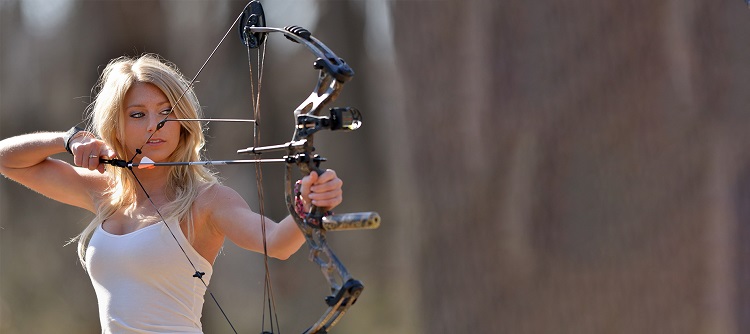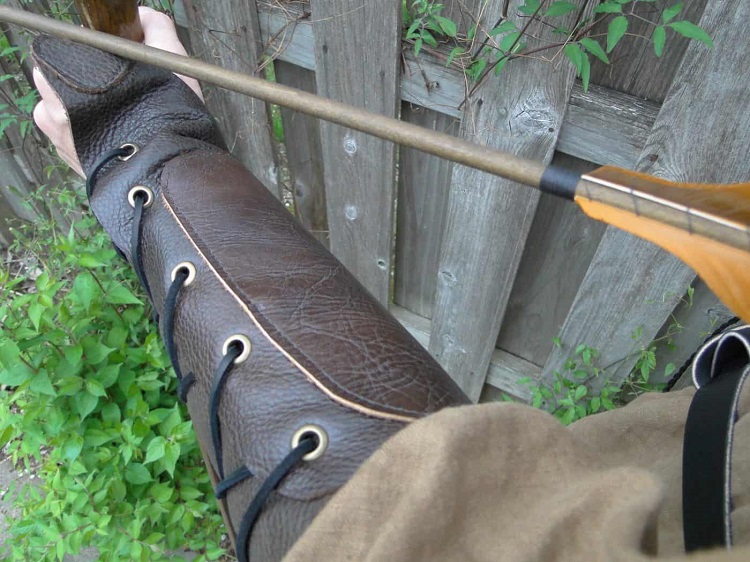Archery is one of the oldest sports still practised. Derived from the Latin word arcus, in ancient times it was only used for combating and hunting purposes, but today it’s a popular competitive sport. In the 1840s, archery was taken to the level of modern sport and first appeared in the Olympic Games in 1900. It was approved as Summer Olympics sport and it’s also a Summer Paralympics event.
Archery is a team and individual sport in which competitors use bows to shoot arrows at stationary targets and like any other sport, it can involve a wide range of equipment and accessories. Whether you’re going into archery for competitive reasons, hunting or just for recreational purposes, finding the right archery supply for each step of the process can be confusing at times. To help you get a good idea of the kit you may need, here is a quick list of the basic equipment, from bows and arrows to targets and accessories.

Source: precisionarcheryonline.com
Archery Supplies
Learning archery is an exciting adventure. For newcomers to archery, it’s recommended that a beginner’s course is completed before considering any major purchases. You can find a great archery supply selection and choose from many different archery accessories. There are three types of accessories to do archery – accessories intended for the archer, accessories for the bow and accessories for the arrow. Here is what you need to know in order to choose the ones that are most suitable for you.
Bow and Bow Accessories
The bow is the projectile weapon consisting of a shaft with the two ends joined by a string to shoot arrows. There are a lot of different bows available on the market, different classes, descriptions and materials compositions. One of the coolest perks archers enjoy is that they can choose between bows and select what they enjoy most, there’s no right or wrong choice.
Bowstring and Chest Guard
The bowstring is used to transfer the energy to the arrow. A chest guard is preferred to keep clothing out of the way and protect your body from the bowstring while releasing it.

Source: advancedhunter.com
Releaser
The release aid is used to hold the bowstring, or a small loop added to the string with the release aid being held and pulled back to bring the bow to the shooting position. It includes a trigger mechanism that releases the bow to shoot the arrow.
Bow Stringer
In order to string and destring bows, it’s a requirement to have a bow stringer which fits over the ends of the limbs and allows you to deflect the bow sufficiently to install or remove the string.
Bow Sight
This is a machine placed on the bow that helps the archer take aim. The sight helps you improve your shooting accuracy.
Bow Stabiliser
It’s a weight mounted on the bow to stabilise it during and after the shot.
Bow Stand
A stand will hold the bow safely and off the ground when not in use. There are different designs available, but all essentially have a U-shaped holder to sit the bow grip into a small strip that the bowstring slots into and keeps the bow from moving.
Bow Case
To keep the bow and accessories together, a bow case provides storage and protection, so you can carry your equipment around with ease.

Source: northamericanwhitetail.com
Arrow and Arrow Accessories
Once you’ve chosen your bow, it’s time to choose arrows. Arrows flex when you release the bowstring and there are various types of arrows on the market. However, make sure you choose arrows that flex just right for the draw weight, or the weight you’ll pull, and the draw length, or the distance you’ll draw the bow.
Arrows are made of four components, such as the following.
Shaft
It’s the main body of the arrow and can be an aluminium or carbon tube or solid wood.
Nock
It’s the attachment on the rear of an arrow that holds it in place on the bowstring.
Fletching
Fletching is a feather type material that’s put at the end of each arrow, so it can fly straight. The fletching provides stability to the arrow’s flight. There are a variety of fletchings out there, including traditional feathers and modern plastic veins available in different shapes.
Pile
This is the point of the arrow, usually made from heavier metal than the shaft to help the arrow fly straight.

Source: tacticalhuntr.com
Arm Guard
Having an arm guard will provide protection from abrasion when an arrow is released.
Shooting Glove/Finger Tab
A leather cloth or a flat piece of leather is needed to serve as a guard and protect your fingers while releasing the arrow. For a close and comfortable fit, it’s secured over your fingers and adjusted to the size of your hand.
Arrow Rest
This is a simple device that fits to the riser of the bow to support an arrow while it’s being released. It’s designed to hold the arrow in the right position, but also, it’s flexible enough not to interfere with the arrow as it begins its flight. Whether you’re lefthanded or righthanded, you can find a suitable arrow rest.
Quiver
Quiver is a container worn around the waist for holding the arrows. A side quiver is attached to a belt and worn around the waist, while a ground quiver is placed on or into the ground and holds arrows next to the archer.
Silencer
This is a type of accessory that guarantees silent drawbacks and reduces noise and friction. It’s easy to install and very durable as well.

Source: archery360.com
Target
Archery targets usually come in two different types – 3D hunting types and flat targets used for competitive archers. A target is comprised of three parts, including a target face, a boss and a stand. The boss stops the arrows safely, while the stand holds the boss and target face in place.
Additionally, there are some other small items that you can purchase, including string wax, which needs to be applied every few weeks to keep the string in a good condition. Also, you can get spare nocks, fletchings and points for arrows, all minor costs, but allow for repairs to be made at any time, so you can enjoy your archery experience more.
As with any other sporting gear, you can always upgrade archery equipment whenever needed. You could start with a simple basic setup and upgrade later. If you want to bow hunt or participate in leagues, you’ll need a different setup for each discipline.

